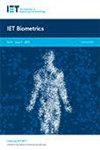利用长距离噪声特征和多级频率感知线索进行人脸伪造检测
IF 1.8
4区 计算机科学
Q3 COMPUTER SCIENCE, ARTIFICIAL INTELLIGENCE
引用次数: 0
摘要
人脸伪造技术制造的高仿真假人脸广泛传播,在现代社会引发了严重的信任问题和伦理问题。因此,人脸伪造检测已成为防止技术滥用的一个突出研究课题。尽管大多数现有的人脸伪造检测器在数据集内场景下评估高质量人脸时都取得了成功,但它们往往会过度拟合特定的操纵伪造物,并且缺乏对后处理操作的鲁棒性。在这项工作中,我们设计了一个创新的双分支协作框架,利用变换器和 CNN 的优势,从全局和局部两个角度深入挖掘多模态伪造假象。具体来说,我们提出了一个新颖的自适应噪声痕量增强模块(ANTEM),用于去除高级人脸内容,同时放大噪声域中更广泛的伪造伪迹。然后,基于变压器的分支可以跟踪长距离噪声特征。同时,考虑到即使在压缩情况下,细微的伪造假象也可以在频域中得到描述,因此开发了多级频率感知模块(MFAM),并进一步应用于基于 CNN 的分支,以提取互补的频率感知线索。此外,我们还采用了涉及交叉熵损失和单中心损失的协作策略,通过优化双分支的融合特征来增强对更广义表征的学习。在各种基准数据集上进行的广泛实验证明,与其他竞争方法相比,我们的框架具有更优越的泛化能力和鲁棒性。本文章由计算机程序翻译,如有差异,请以英文原文为准。
Face Forgery Detection with Long-Range Noise Features and Multilevel Frequency-Aware Clues
The widespread dissemination of high-fidelity fake faces created by face forgery techniques has caused serious trust concerns and ethical issues in modern society. Consequently, face forgery detection has emerged as a prominent topic of research to prevent technology abuse. Although, most existing face forgery detectors demonstrate success when evaluating high-quality faces under intra-dataset scenarios, they often overfit manipulation-specific artifacts and lack robustness to postprocessing operations. In this work, we design an innovative dual-branch collaboration framework that leverages the strengths of the transformer and CNN to thoroughly dig into the multimodal forgery artifacts from both a global and local perspective. Specifically, a novel adaptive noise trace enhancement module (ANTEM) is proposed to remove high-level face content while amplifying more generalized forgery artifacts in the noise domain. Then, the transformer-based branch can track long-range noise features. Meanwhile, considering that subtle forgery artifacts could be described in the frequency domain even in a compression scenario, a multilevel frequency-aware module (MFAM) is developed and further applied to the CNN-based branch to extract complementary frequency-aware clues. Besides, we incorporate a collaboration strategy involving cross-entropy loss and single center loss to enhance the learning of more generalized representations by optimizing the fusion features of the dual branch. Extensive experiments on various benchmark datasets substantiate the superior generalization and robustness of our framework when compared to the competing approaches.
求助全文
通过发布文献求助,成功后即可免费获取论文全文。
去求助
来源期刊

IET Biometrics
COMPUTER SCIENCE, ARTIFICIAL INTELLIGENCE-
CiteScore
5.90
自引率
0.00%
发文量
46
审稿时长
33 weeks
期刊介绍:
The field of biometric recognition - automated recognition of individuals based on their behavioural and biological characteristics - has now reached a level of maturity where viable practical applications are both possible and increasingly available. The biometrics field is characterised especially by its interdisciplinarity since, while focused primarily around a strong technological base, effective system design and implementation often requires a broad range of skills encompassing, for example, human factors, data security and database technologies, psychological and physiological awareness, and so on. Also, the technology focus itself embraces diversity, since the engineering of effective biometric systems requires integration of image analysis, pattern recognition, sensor technology, database engineering, security design and many other strands of understanding.
The scope of the journal is intentionally relatively wide. While focusing on core technological issues, it is recognised that these may be inherently diverse and in many cases may cross traditional disciplinary boundaries. The scope of the journal will therefore include any topics where it can be shown that a paper can increase our understanding of biometric systems, signal future developments and applications for biometrics, or promote greater practical uptake for relevant technologies:
Development and enhancement of individual biometric modalities including the established and traditional modalities (e.g. face, fingerprint, iris, signature and handwriting recognition) and also newer or emerging modalities (gait, ear-shape, neurological patterns, etc.)
Multibiometrics, theoretical and practical issues, implementation of practical systems, multiclassifier and multimodal approaches
Soft biometrics and information fusion for identification, verification and trait prediction
Human factors and the human-computer interface issues for biometric systems, exception handling strategies
Template construction and template management, ageing factors and their impact on biometric systems
Usability and user-oriented design, psychological and physiological principles and system integration
Sensors and sensor technologies for biometric processing
Database technologies to support biometric systems
Implementation of biometric systems, security engineering implications, smartcard and associated technologies in implementation, implementation platforms, system design and performance evaluation
Trust and privacy issues, security of biometric systems and supporting technological solutions, biometric template protection
Biometric cryptosystems, security and biometrics-linked encryption
Links with forensic processing and cross-disciplinary commonalities
Core underpinning technologies (e.g. image analysis, pattern recognition, computer vision, signal processing, etc.), where the specific relevance to biometric processing can be demonstrated
Applications and application-led considerations
Position papers on technology or on the industrial context of biometric system development
Adoption and promotion of standards in biometrics, improving technology acceptance, deployment and interoperability, avoiding cross-cultural and cross-sector restrictions
Relevant ethical and social issues
 求助内容:
求助内容: 应助结果提醒方式:
应助结果提醒方式:


